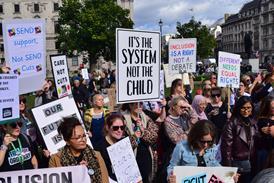Costs law
Assessment of costs
The long-awaited guidance on the correct approach to proportionality in the assessment of costs came in Lownds v Home Office [2002] EWCA Civ 365, a decision of a Court of Appeal presided over by the Lord Chief Justice, Lord Woolf, and assisted by the Senior Costs Judge, Peter Hurst, as assessor.
The court itself described the decision as important, and Lord Woolf took the opportunity to explain at length the importance of proportionality in the scheme of his reforms.
Although the ratio of the case concerns proportionality at the stage when costs are being assessed, he emphasised that Civil Procedure Rule (CPR) 44.3, which concerns the award of costs, was also 'redolent of proportionality'.
Proportionality, then, is to be taken into account both when costs are awarded and when they are quantified.
The quantification of costs, when proportionality might be an issue, is to be a two-stage process.
In stage one, the costs officer must make a preliminary judgment of the proportionality of the claim for costs as a whole.
In so doing, he will be guided by paragraphs 11.1 and 11.2 of the Costs Practice Direction.
Proportionality requires the parties conducting litigation to assess in advance the likely value of the claim, its importance and complexity, to plan the necessary work, the level of fee-earner who should be carrying it out, and the appropriate amount to spend on the various stages of the action.
In other words, a case plan is required (the court did not use the term 'case plan', so there is no formal requirement of a written document, but case-planning has to take place and a written document will provide proof that it has).
In the light of these factors, the costs officer decides whether the overall claim is proportionate.
He then moves to the second stage, the item-by-item consideration of the bill.
If the overall costs claimed are proportionate, then the only test which the costs officer need apply is one of reasonableness.
However, if the costs are disproportionate, the costs officer should only allow the work which was necessarily incurred, and should allow a reasonable amount in respect of such work.
Lawyers of a certain age (that is, practising before 1986) will be familiar with the test of necessity in costs - it was the test of the old party-and-party basis of taxation.
However, guidance on necessity was given by Lord Woolf.
Firstly, the standard should be a 'sensible standard' - one 'which takes fully into account the need to make allowances for different judgments which those responsible for litigation can sensibly come to as to what is required'.
Using hindsight to set too high a standard is to be avoided.
The threshold should be capable of achievement by a competent practitioner without undue difficulty.
Secondly, in assessing what is necessary the costs officer should take account of the conduct of the paying party.
Just as by co-operation the other side can reduce costs, equally by being unco-operative an opponent can render necessary costs which would otherwise be unnecessary.
Although, as the practice direction says, proportionality eschews a rigid relationship between damages and costs, the amount of damages in issue is clearly relevant.
This is to be judged differently as between claimants and defendants.
For a claimant, the amount is the sum that it was reasonable for him to believe he might recover at the time he made his claim.
Although on its face the test for a defendant is the same, that is, the sum it was reasonable for him to believe the claimant might recover should his claim succeed, in practice there is an important difference.
A defendant, the court said, will normally be entitled to take a claim at face value and assume that the claim which is made is a reasonable one.
Lownds itself was a clinical negligence claim by a prisoner which settled for 3,000.
The costs claimed were about 19,000 and about 17,000 was allowed on assessment.
The majority of costs were incurred before the CPR.
The Senior Costs Judge advised that about 5,600 of the costs allowed related to the post-CPR period.
In those circumstances, the Court of Appeal declined to reduce the assessment on the grounds of proportionality.
Furthermore, the Senior Costs Judge indicated that, if the entire action had been carried out post-CPR, there would have been no significant issue as to proportionality if the costs had been 6,500 to 7,000 with some extra allowance for the fact that the claimant was in prison which complicated the taking of instructions.
However, it would be dangerous to take these figures as an indication that costs of a little over double the settlement figure will always be proportionate.
The proportionate figure must always be calculated by reference to the facts and needs of the case.
By Jeremy Morgan, barrister, 39 Essex Street, London


























No comments yet